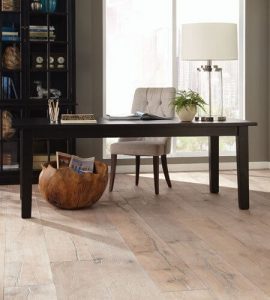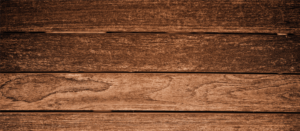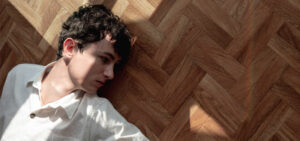Hardwood floors are an interior design trend that has stood the test of time. Hardwood flooring dates back to the early 1600s and since then, has remained buyers’ preferred flooring when choosing a home. From its ability to increase your home value and stand up against the wear and tear of life, hardwood flooring has remained a classic.
Even so, trends within the hardwood flooring world have shifted over the years. As we approach a new year, we’re exploring what the biggest trends of 2020 were, what’s going out of style, and what we expect to stay.
Light Hardwood Flooring Trend

For many years, light flooring was seen as cheap and outdated. Not so in 2020, where we saw many homeowners embracing the brighter, airy nature of these lighter hardwood floors. Many describe these lighter tones as opening up their home more and even making many spaces feel larger.
First, we see the blond floor trend that gives homes a more contemporary feel. Most blond floors are made from bamboo, ash, maple, white oak and even red oak. While you may associate a sleeker look with a darker, matte wood, blonde floors prove that you can get that modern look from lighter hardwood as well.
Other trends in the lighter hardwood category were whitewashed and honey-wood floors. Whitewashed hardwood reminds us of a beachy, Southern California home while honey-colored floors feel cozier. While whitewashed wood shows more wear and tear, honey-finished floors are a timeless classic that’s going to be around for many years to come.
Lastly, one of the most popular light-washed hardwood flooring trends of 2020 was Scandinavian style floors. If you scoured Pinterest or Instagram this past year, you probably encountered these types of floors. Scandinavian floors generally have a wider plank and white finish, while still maintaining a natural feel. In general, Scandinavian interior design style is minimalist with natural elements mixed in – think whitewashed walls or brick. While not for everyone, it definitely had its moment this year.
Textured Flooring

In 2020, we saw textured flooring jump into the mix. Textured flooring is best described as when no two planks look the same. The most common textured flooring trends are hand scraped, wire brushed and distressed wood, which are often mistaken for one another.
Hand-scraped hardwood features long defined scrapes in the finish and can often make the wood look scuffed (in a good way). Handscraped hardwood allows for a lot of variation between the different planks and give floors more of a rustic and handcrafted look.
On the other hand, wire brushed hardwood looks a bit more subtle with smaller, intentional scratches. This can often result in the wood looking more distressed but still more uniform than others.
Lastly, distressed hardwood is usually mistaken for hand scraped hardwood. Both look weathered, but distressed hardwood generally more so. Think knots, scrapes and even burns. If you’re looking for a more aged and antique look, distressed hardwood is the way to go. Be careful when choosing distressed hardwood, however, because oftentimes this type of wood is done by a machine and ends up looking unnatural. The best way to get distressed hardwood is, you guessed it, let it happen naturally. If you don’t have the time, make sure you pick a flooring company that knows their stuff.
Herringbone and Other Pattern Trends

Not only is choosing the right type of hardwood important for your home but choosing the correct pattern is also a huge factor. 2020 saw an increase in herringbone patterns across many new builds and renovations. Homeowners were likely inspired by the influx of herringbone floors popping up over social media, which is why the trend was popular among younger people. Herringbone patterns tend to be pretty subjective, and we don’t expect the trend to last forever.
A few other popular patterns that popped up in 2020 included diagonal floors and mixed width flooring, both of which we don’t anticipate lasting long. Homeowners will likely be pretty divided on these trends, making the resale value questionable.
However, the last trend we can get behind is wide-planked hardwood flooring. Instead of traditional, thinner hardwood floor planks, homeowners really gravitated to wide-planked hardwood flooring in 2020. This trend tends to make the room look larger. Not only is this trend popular now, but we anticipate it’ll be popular for many years to come. These days, thin planks are often seen as outdated.
Final Thoughts
Remember, all of these trends are subjective. If you see a hardwood floor you really love, we encourage you to follow your gut! At the end of the day, you’re the one who will be living on the floors for years. As long as the hardwoods come from a reputable hardwood distributor (like us!) and you love them, then more power to you.